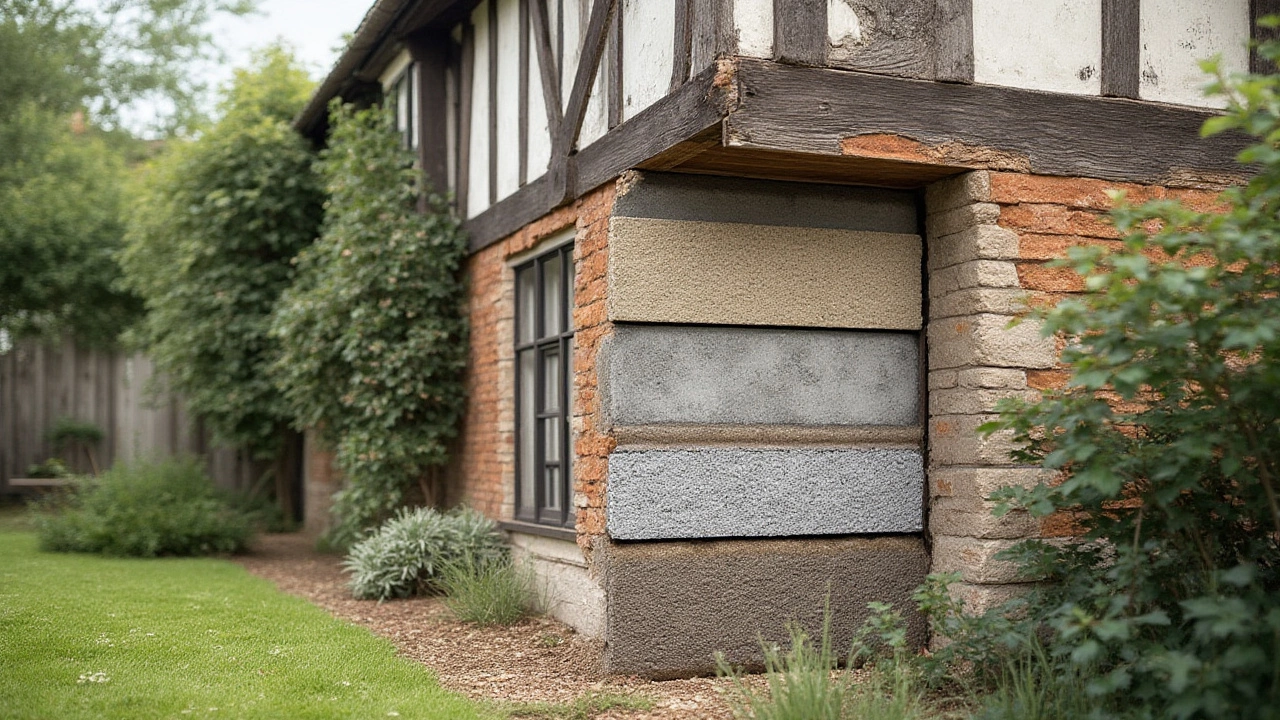Cement for Foundation Repair: What You Need to Know
If you’ve spotted a crack in your foundation, the first thing you’ll wonder is what kind of cement will actually hold it together. The good news? You don’t need a specialist product you’ve never heard of. Most of the time, a high‑strength, fast‑setting concrete mix does the job, as long as you prep the area right and follow a simple process.
Before you grab a bucket, take a look at the crack. Is it a hairline split that shows up only when the house settles, or is it a wide gap that lets water seep in? Small hairline cracks can be sealed with a polymer‑modified cement, while larger gaps need a stronger mix that can bear load. Knowing the size helps you decide whether a standard 4000‑psi concrete is enough or if you should go for a 5000‑psi high‑strength blend.
Mixing the Right Cement
The secret to a solid repair isn’t just the cement brand; it’s how you mix it. Use a clean bucket and add water slowly—aim for a stiff but workable consistency. Too much water weakens the cure and can lead to future cracks. If you’re using a pre‑mixed bag, follow the manufacturer’s water‑to‑mix ratio exactly; most bags recommend about 5‑6 liters of water per 25 kg of cement.
For extra strength, toss in a little sand (about 1 part sand to 2 parts cement) and a small amount of Portland cement. This creates a mortar‑like mix that fills gaps well without shrinking too much as it cures. Add a concrete bonding agent if the existing foundation surface is smooth; the agent helps the new cement grip the old concrete.
Applying and Curing the Repair
First, clean the crack thoroughly. Use a wire brush, a shop‑vac, and even a pressure washer if water has gathered inside. Remove loose debris, dust, and any old sealant. Then, dampen the area with a mist of water—this prevents the old concrete from sucking moisture out of the new mix.
Next, pour the cement into the crack using a trowel or a small scoop. Pack it tightly; you want no air pockets. Smooth the surface and feather the edges into the surrounding concrete so the repair blends in. If the crack is deeper than a few inches, fill it in layers, letting each layer set for about 30 minutes before adding the next.
Once you’ve finished, protect the repair from rapid drying. Cover it with a plastic sheet or damp burlap for 24‑48 hours. This keeps the moisture in and lets the cement cure properly, reaching its full strength. After a week, test the repair by gently pressing on it; it should feel solid, not spongy.
Remember, the best repair is one that prevents water from re‑entering. If your foundation sits in damp soil, consider adding a perimeter drainage system after the cement cure. This extra step saves you from repeat repairs down the line.
In short, choosing the right cement for foundation repair isn’t rocket science. Pick a high‑strength mix, prep the crack, mix with the right water ratio, apply carefully, and cure it right. Follow these steps and you’ll give your home a sturdy base that will last for years.

